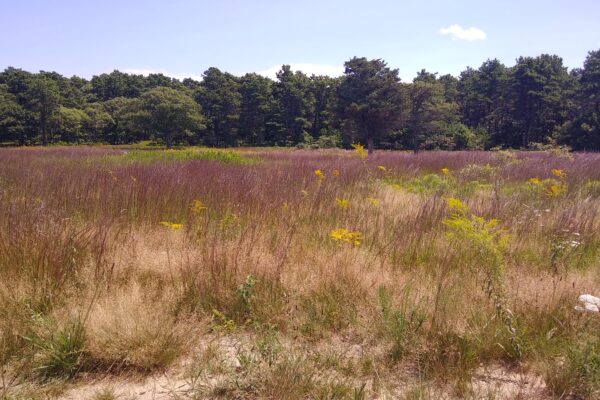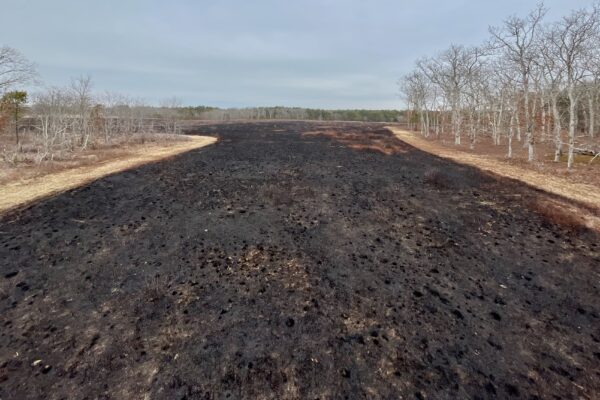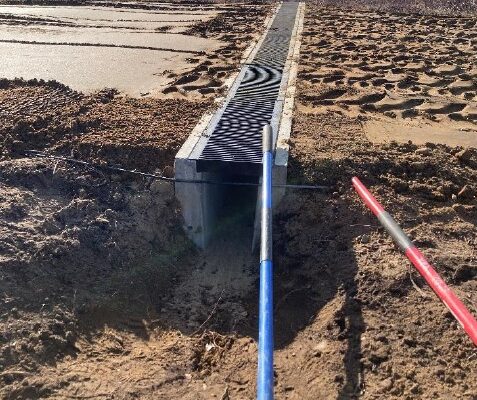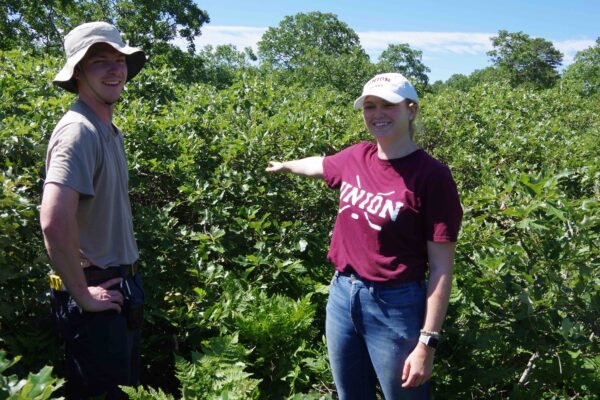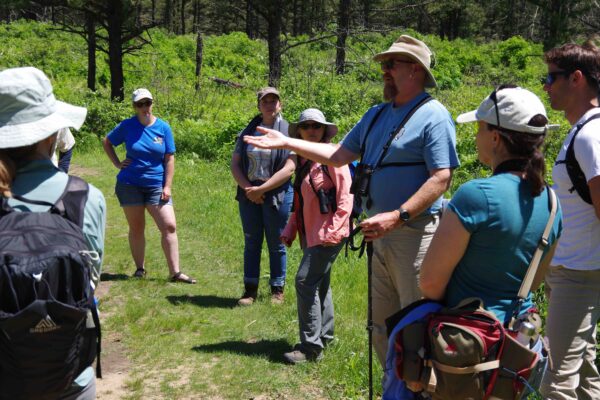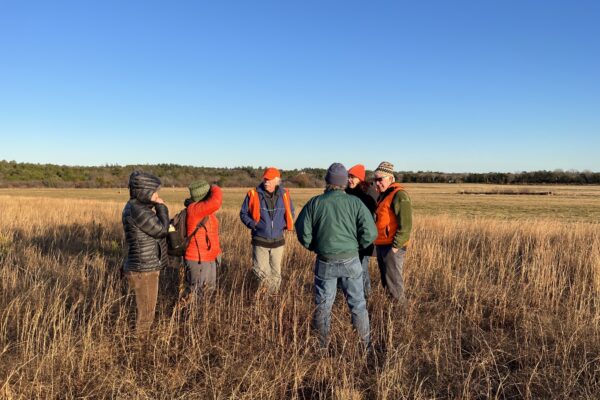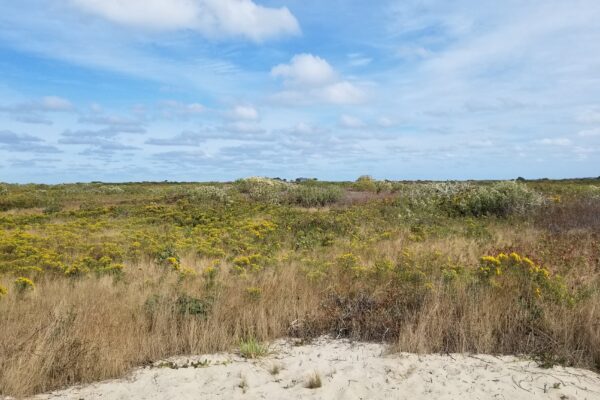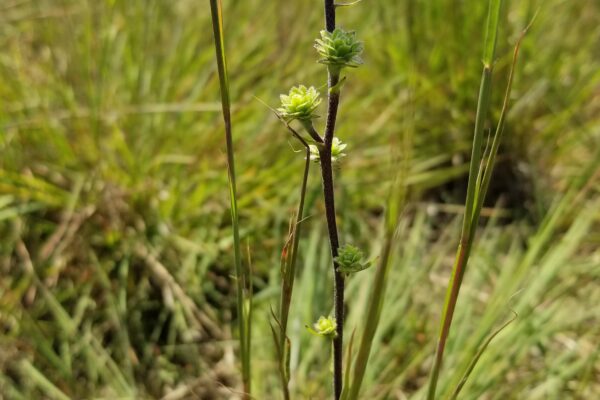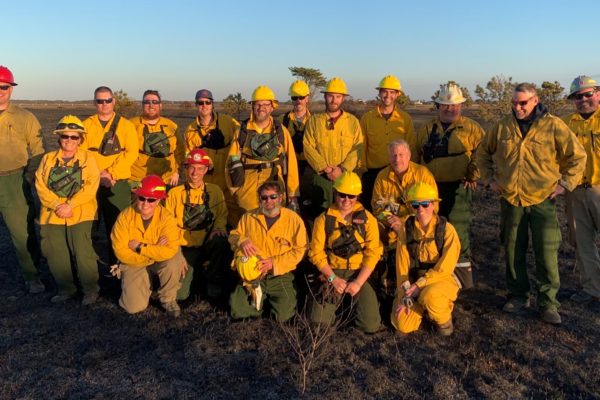-
TNC Plants 1,700 Plugs to Restore Sandplain Grassland
In May of this year, The Nature Conservancy (TNC), with the help of some hearty volunteers from Sierra Club, planted 1,700 native sandplain wildflower and grass plugs at two restoration sites along the south shore of Martha’s Vineyard. Species planted include, Solidago odora, Symphotrichium dumosum, and Danthonia spicata, which were all grown at Polly Hill Arboretum as part of their MV Wildtype program. The island received an abundance of rain post-planting through early August – a stark difference from the drought experienced throughout 2022. A survey analyzing the success of a subpopulation was conducted…
Continue reading -
TNC Restores Medicine Lots Frost Bottom
This winter, The Nature Conservancy implemented a habitat management project on their Medicine Lots property to restore habitat in an imperiled sandplain barrens frost bottom. This project aimed to use careful methods to remove trees, grind stumps and mow the frost bottom with heavy equipment to maintain an open post-oak savanna to promote both rare and uncommon biodiversity as well as mitigate for fire hazards. Nearly a dozen regional ecologists were consulted to inform the design of this project, including members of the Sandplain Grassland Network. All wood chips were removed from the site and the soil profile was…
Continue reading -
The Nature Conservancy (TNC) and the Trustees Burned Six Properties on Martha’s Vineyard
In April, The Nature Conservancy (TNC) and The Trustees of Reservations (The Trustees) partnered to perform six controlled burns on Martha’s Vineyard in Edgartown and West Tisbury with funding from MassWildlife’s Habitat Management Grant Program, and with assistance from MA Department of Conservation and Recreation as well as both the Edgartown and West Tisbury Fire Departments. The burns will help foster the growth of globally imperiled sandplain grasslands and woodlands on Martha’s Vineyard. As one of the best tools for managing this ecosystem, controlled burns preserve…
Continue reading -
Conservation of the North American Racer with Under-road Crossings
The Trustees, in partnership with BiodiversityWorks secured a MA Wildlife Habitat Protection Program grant to support the construction of two North American Racer (Coluber constrictor) hibernacula and a wildlife road crossing at Long Point Wildlife Refuge. The racer is a species of conservation concern in MA and is listed in the state’s Wildlife Action Plan (SWAP). A 2017- 2019 study by BiodiversityWorks on Martha’s Vineyard indicated that this particular species relies heavily on early successional habitat such as coastal heathland/shrubland and sandplain grassland during the spring and summer and hibernate among pitch pine forests in the winter. This study…
Continue reading -
Vegetation and Carbon Change on Martha’s Vineyard Protected Lands
The Sandplain Grassland Network’s review of grassland studies and interviews with managers of grassland and related disturbance-dependent habitats indicated that decreases in the frequency and intensity of disturbances were leading to increased cover of woody vegetation and decreases in plant species richness. At the same time, natural area managers nationwide increasingly recognize the importance of natural lands for offsetting carbon emissions from fossil fuel burning. In the summer of 2022 a team of scientists from the Woodwell Climate Science Center teamed with the Sheriff’s Meadow Foundation and the Martha’s Vineyard Commission to examine species and carbon change in more than…
Continue reading -
Waquoit Bay Reserve Host’s Webinar on Sandplain Grasslands
As part of their Research at the Reserve Series, the Waquoit Bay National Estuarine Research Reserve, on the evening of March 9, 2023, hosted a webinar with Massachusetts State Botanist, Dr. Robert Wernerehl (above left). The webinar focuses on Sandplain Grasslands, a unique, treeless ecosystems in the Northeast. Like similar grasslands across the United States, the extent and quality of these grasslands has greatly diminished over recent decades. A few thousand acres remain in New York, Massachusetts, and Maine. This habitat is critical for endangered plant and animal species, from harriers and short-eared…
Continue reading -
MassWildlife Doubles Down on Grassland Restoration
The Baker-Polito Administration, through the MassWildlife Habitat Management Grant Program, overseen by the Massachusetts Department of Fish and Game, recently awarded nearly $500,000 in financial assistance to private and municipal landowners of conserved lands to improve and manage habitat for wildlife deemed in greatest conservation need. Heralded as “The Climate Change Resilience Grant Opportunity”, the grant supports projects that improve resiliency in ecological communities that are susceptible to climate change. Funds will support habitat improvement…
Continue reading -
Restoring Liatris novae-angliae at Bamford Preserve
This past summer, The Nature Conservancy, with the help of a dedicated crew of volunteers, planted 1,000 New England Blazing Star (Liatris novae-angliae) seedlings at the 60 – acre Bamford Preserve in the Katama Plains area of Martha’s Vineyard. Located in Edgartown, Massachusetts, the Katama Plains is one of the best examples of a sandplain grassland remaining in the world, and the restoration of the Bamford Preserve from agricultural grassland to a diverse sandplain habitat has been a work in progress since the property was purchased by TNC in 2007. In that time, trees have been removed, prescribed burns…
Continue reading -
Burning in Fall and Increasing Frequency Ignites Positive Effects to Native Vegetation at Katama Airfield
In November, The Nature Conservancy (TNC) in Massachusetts partnered with MassWildlife and the Town of Edgartown to conduct prescribed burns on approximately 70 acres of MassWildlife’s Katama Plains Wildlife Management Area and nearby Katama Airfield. Fire is one of the best tools for managing the sandplain grassland ecosystem, preserving precious fire-adapted native species that depend on these habitats while reducing woody vegetation cover. Prescribed burns have been happening on Martha’s Vineyard for decades, creating conditions that maintain native plant and animal species that rely on the grasslands, alter soil conditions and microclimate, and reduce fire risk to the public. In…
Continue reading


